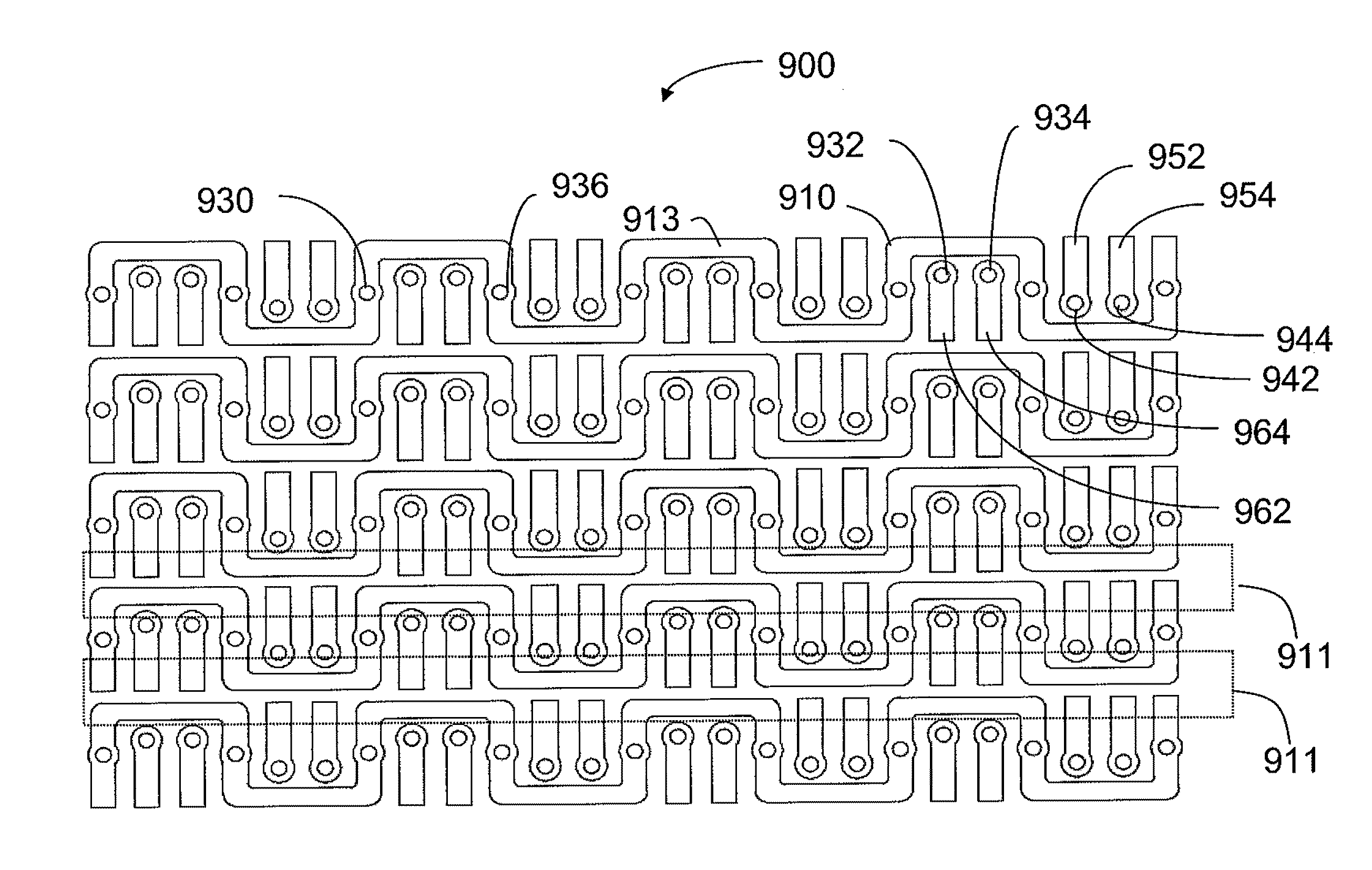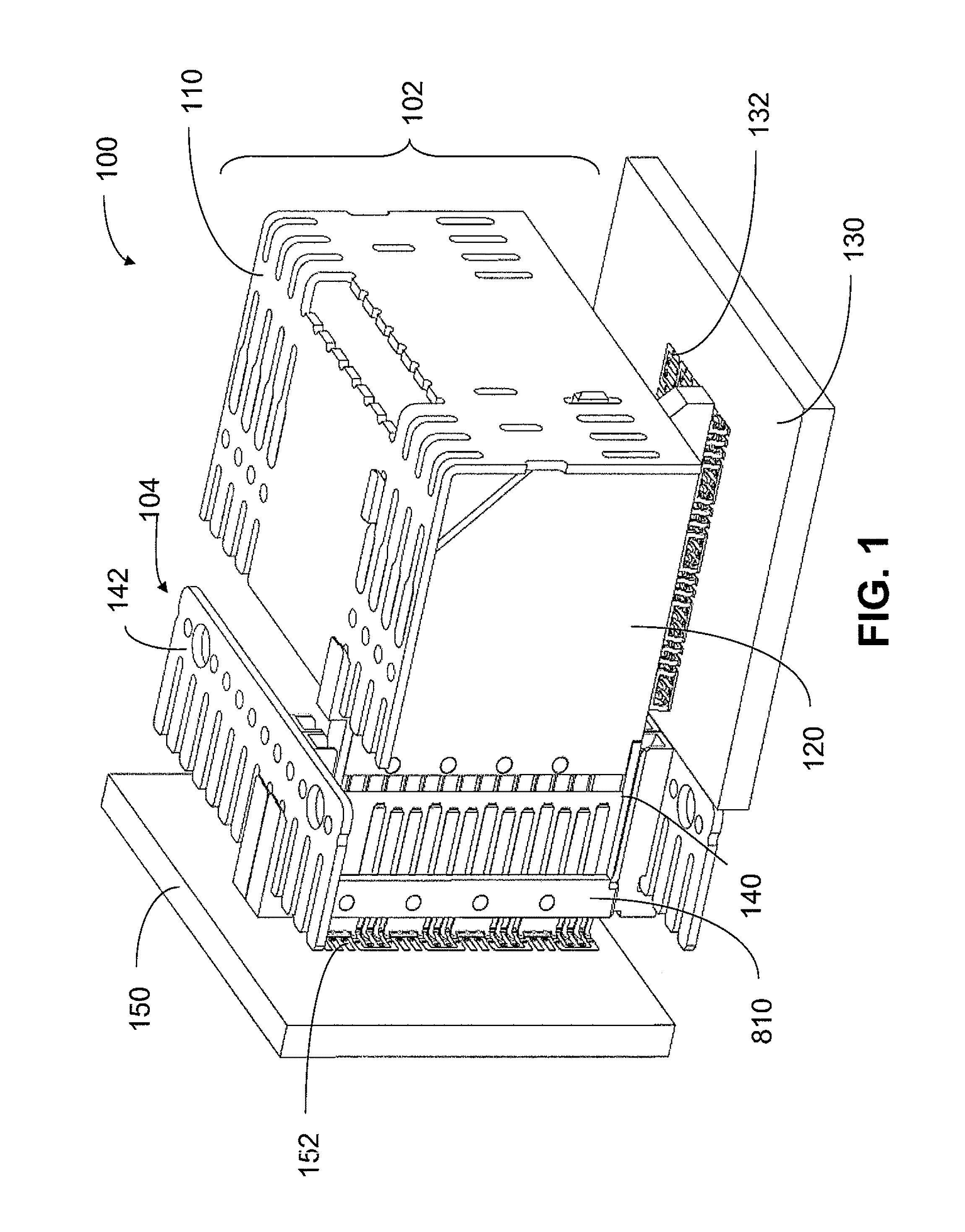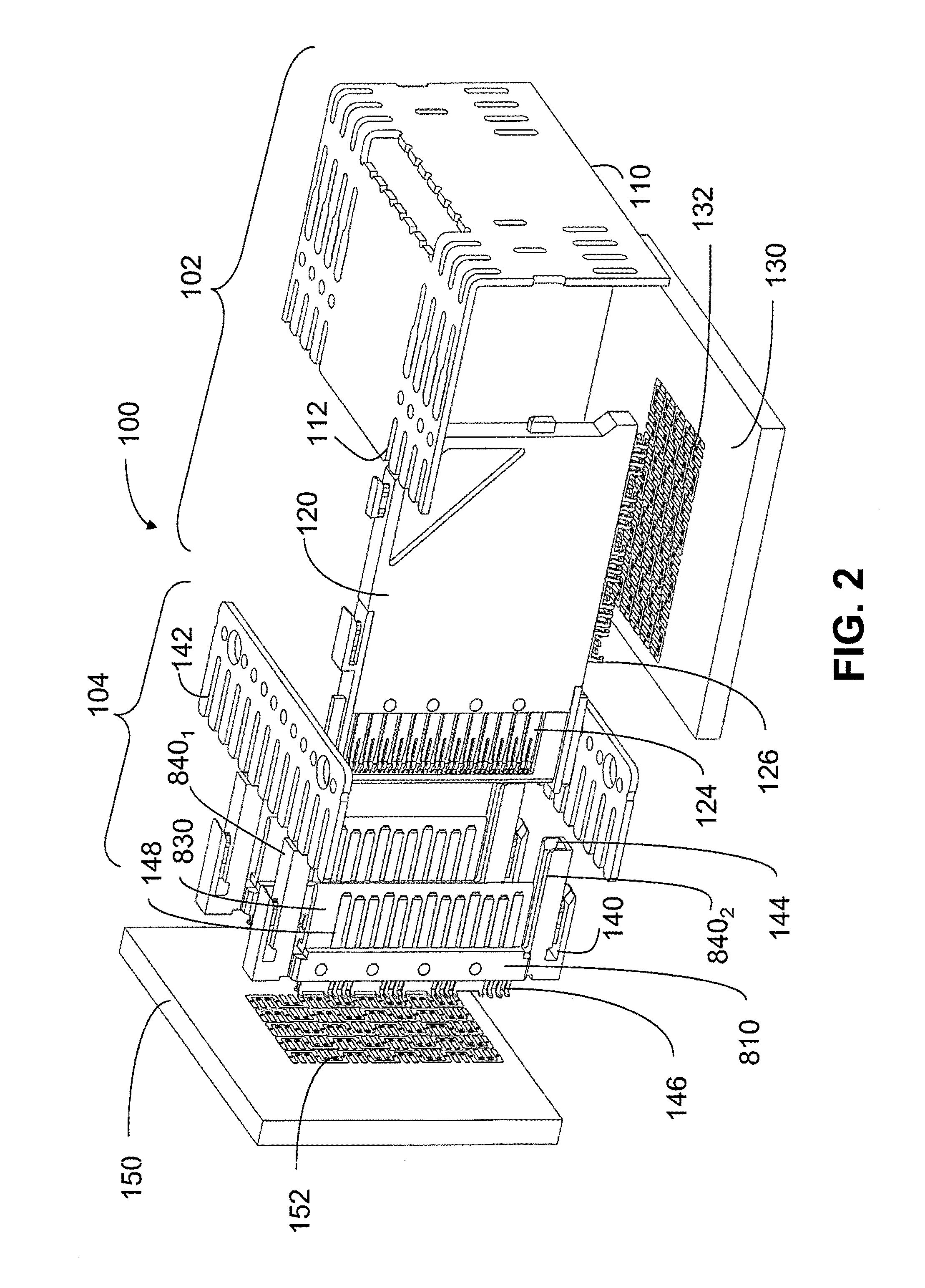High density electrical connector and PCB footprint
a high-density, electrical connector technology, applied in the direction of coupling device connection, coupling contact member material, coupling protective earth/shielding arrangement, etc., can solve the problem of non-uniform spacing of contact tails along the column, and achieve good signal integrity, mechanical robustness, and the effect of promoting the mechanical integrity of the footprin
- Summary
- Abstract
- Description
- Claims
- Application Information
AI Technical Summary
Benefits of technology
Problems solved by technology
Method used
Image
Examples
Embodiment Construction
[0054]This invention is not limited in its application to the details of construction and the arrangement of components set forth in the following description or illustrated in the drawings. The invention is capable of other embodiments and of being practiced or of being carried out in various ways. Also, the phraseology and terminology used herein is for the purpose of description and should not be regarded as limiting. The use of “including,”“comprising,”“having,”“containing,” or “involving,” and variations thereof herein, is meant to encompass the items listed thereafter and equivalents thereof as well as additional items.
[0055]Referring to FIGS. 1 and 2, an illustrative portion of electrical interconnection system 100 is shown. The electrical interconnection system 100 includes a daughter card daughter card connector 102 and a backplane connector 104, each of which is attached to a substrate to be connected through interconnection system 100. In this example, daughter card daugh...
PUM
 Login to View More
Login to View More Abstract
Description
Claims
Application Information
 Login to View More
Login to View More - R&D
- Intellectual Property
- Life Sciences
- Materials
- Tech Scout
- Unparalleled Data Quality
- Higher Quality Content
- 60% Fewer Hallucinations
Browse by: Latest US Patents, China's latest patents, Technical Efficacy Thesaurus, Application Domain, Technology Topic, Popular Technical Reports.
© 2025 PatSnap. All rights reserved.Legal|Privacy policy|Modern Slavery Act Transparency Statement|Sitemap|About US| Contact US: help@patsnap.com



